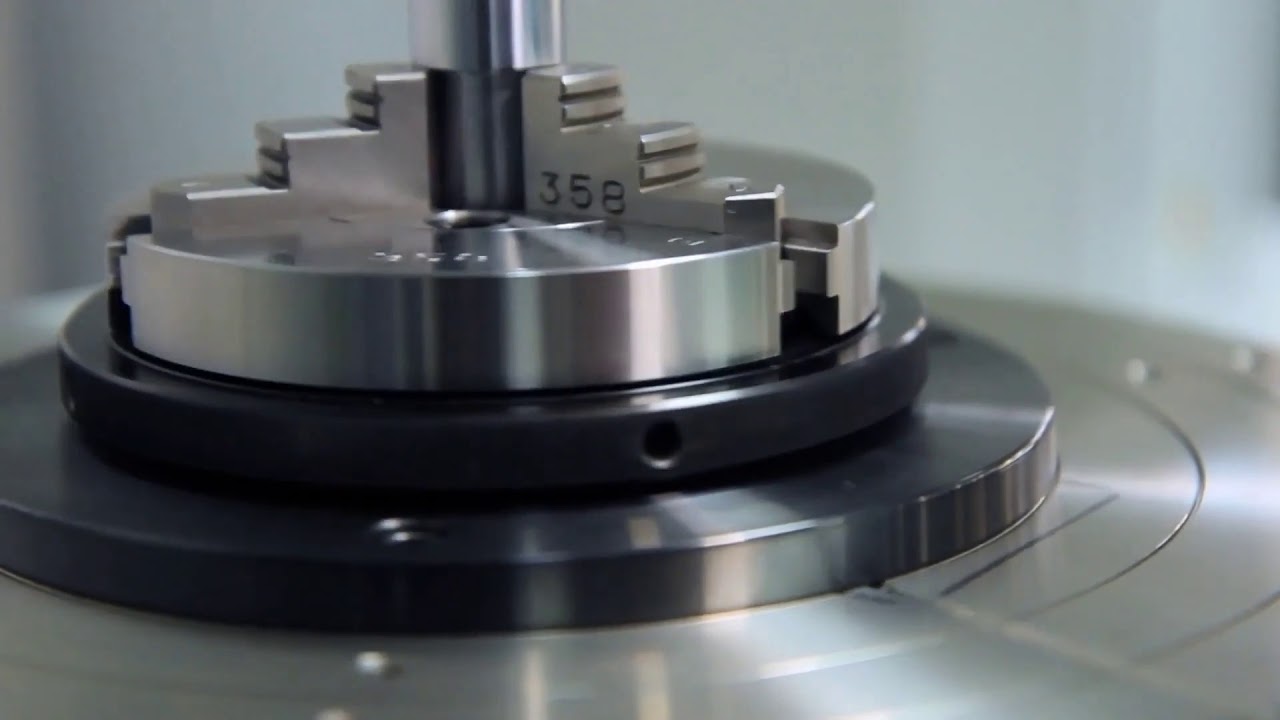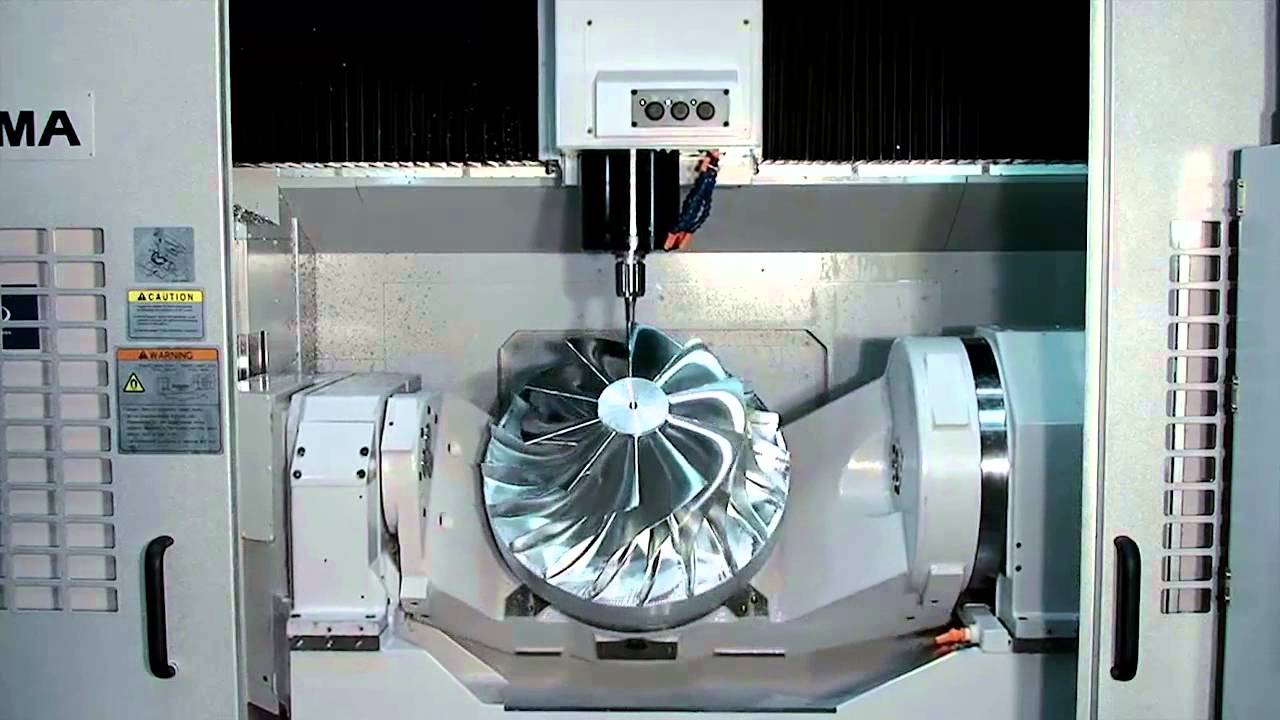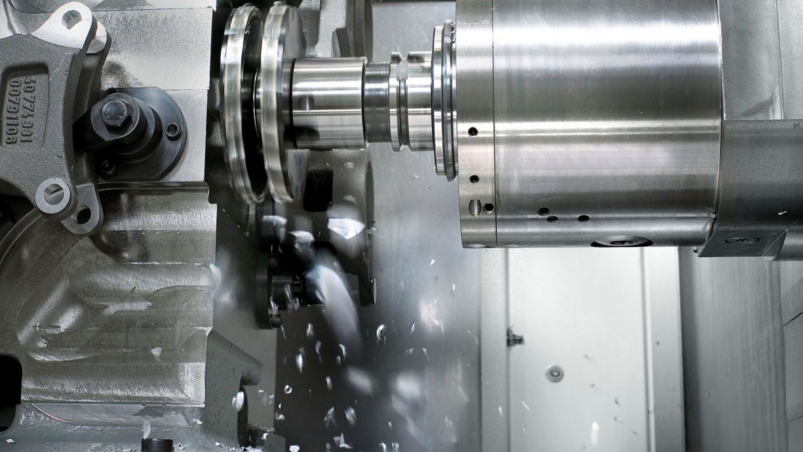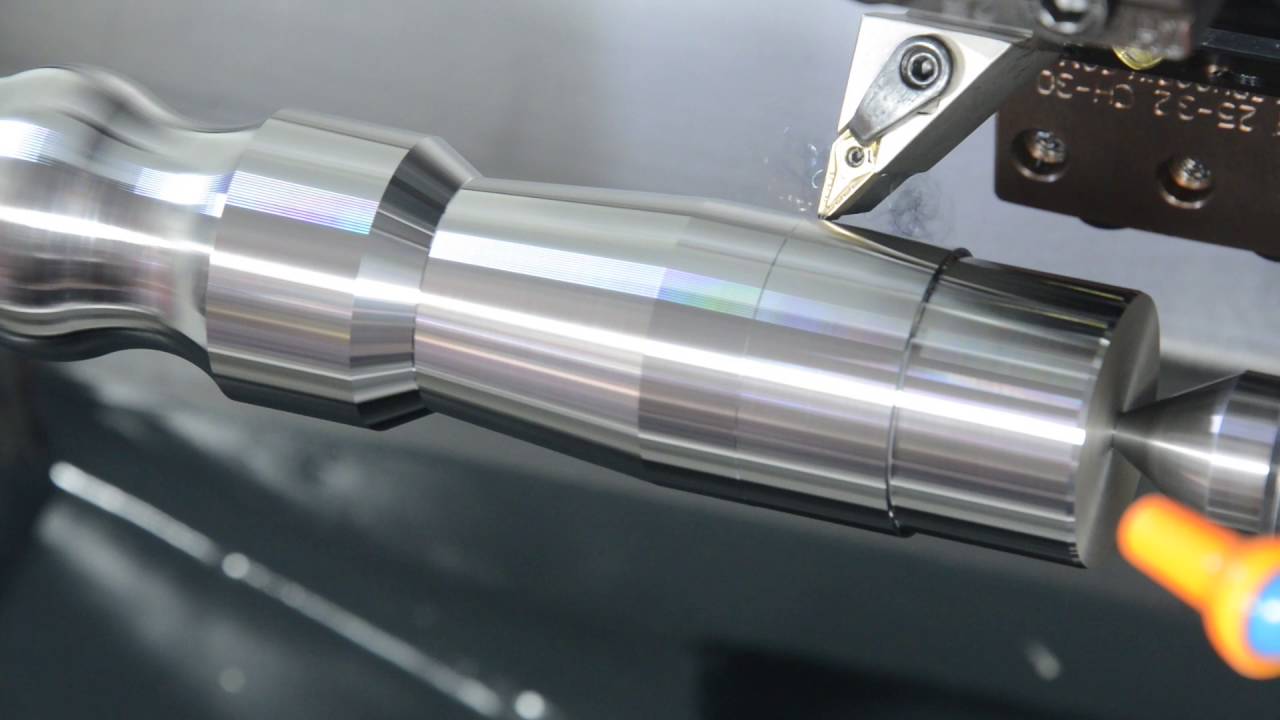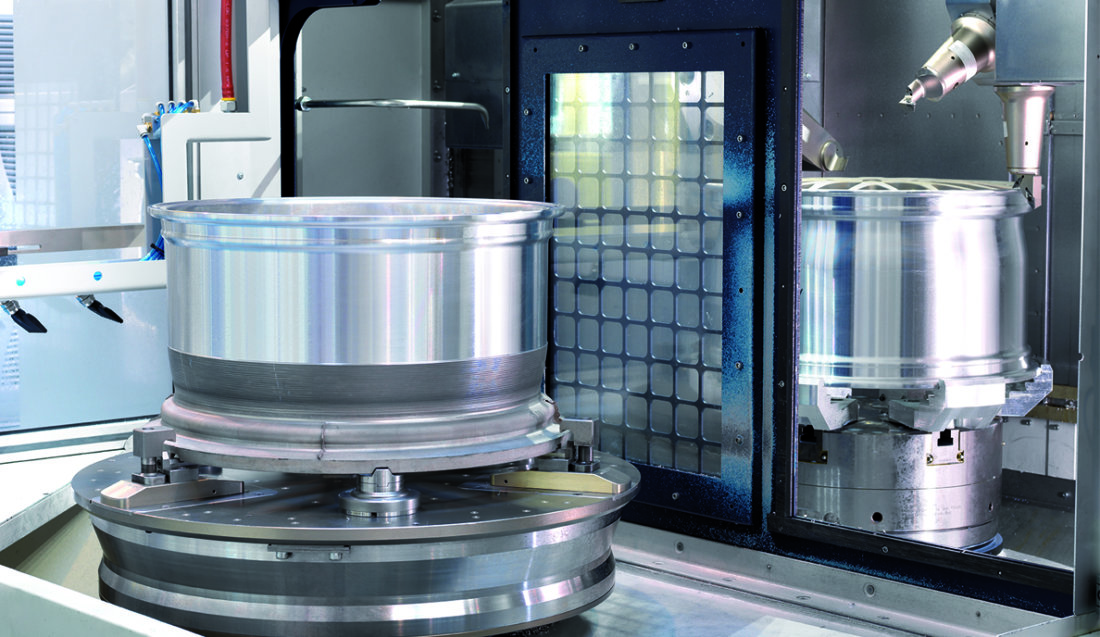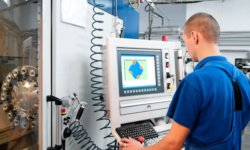When it comes to CNC milling and turning machines, there are a lot of details that make a significant difference in your workflow. No single machine can handle every possible manufacturing operation so it’s wise to note the characteristics that would be most suitable to one’s operations.
There are many such calculations to keep in mind, but one of the most important distinctions to make when it comes to choosing a machining set-up is whether the configuration should be vertical or horizontal.
Horizontal machining centers (HMCs) and vertical milling machines (VMCs) differ in several ways beyond their orientation alone. The two mill types have different components and are suited to different cutting operations: as a rule of thumb, a horizontal milling machine can cut deep grooves with minimal tool chatter or deformation, while a vertical milling machine can be better for fine details.
This article looks at the key differences between horizontal milling and vertical milling machines. It looks at the benefits and limitations of each process, lists some common machines on the market, and offers tips on choosing between horizontal and vertical milling.
What is a Vertical Milling Machine?
A vertical milling machine is a milling machine in which the spindle (which holds the collet, which in turn holds the cutting tool) is oriented vertically. It is the more common configuration for a CNC mill, and can be used for milling, slotting, drilling, or boring.
Vertical milling machines actually comprise the majority of milling machinery across industries like metalworking, which can be attributed to their lower costs in comparison with Horizontal systems. As the name implies, vertical milling machines have a vertical orientation on their cutting head or spindle. The specifics of the milling controls may vary from machine to machine.
Popular vertical milling machines include the Integrex, VCN, and VTC product ranges from Mazak; the VF, VR, and Universal series from Haas (3ERP uses models from the VF and Universal range); the FANUC ROBODRILL; and the CMX V, DMV, and NVX ranges from DMG MORI.
The two main types of vertical mills are turret mills and bed mills.
Turret milling machine
With turret milling machines, the spindle remains fixed in place, while the bed portion of the machine holds the material. This bed moves horizontally or vertically, allowing for the machine to manipulate the position of the material in both directions. The turret mill is an extremely versatile device but it can be limited by the size of the pieces it produces.
Bed milling machine
Bed milling machines move the materials along the horizontal axis with a spindle that is restricted to the vertical axis. The spindle can move up and down as needed and process the material into shape. Bed milling machines have a pretty good range of movement, as the spindle part combines with the horizontal movement of the bed allowing the milling of a wide variety of shapes and depths.
What is a Horizontal Milling Machine?
A horizontal milling machine can perform many similar operations to a vertical mill, but it is configured differently, with the spindle oriented horizontally. More robust and sturdy than vertical mills, these machines can handle powerful cutting operations and heavy parts.
The horizontal mill’s cutters resemble the blade of a circular saw somewhat, with a crucial difference being that they are generally thicker, smaller and their shape offers speedier milling than the spindles on their vertical counterparts.
The use of the arbor and its length can also mean that a horizontal mill can use multiple cutters at a time.
For more complex milling operations, some horizontal milling machines have a rotary table, so the cutting tool can approach the workpiece from different angles. This horizontal milling setup is called a universal table.
Popular horizontal milling machines include the FF, HCN, and MEGA product ranges from Mazak; the EC and Universal series from Haas (3ERP uses the Universal); and the NH, NHX, and i-Series ranges from DMG MORI.
What is CNC Turning
When it comes to CNC turning centers, much like the milling machines, they can also be divided into horizontal and vertical configurations.
Horizontal Turning
Horizontal turning centers are the more prominent type across most industries. They have a spindle that is horizontally oriented, with tools mounted out of the side of the tool holder. This helps them cut across the object being processed. Much like it’s the milling counterpart, this type of turning center also benefits from gravity as it pulls the chips away from the work-piece.
Vertical Turning
Vertical turning centers are also called vertical turret lathes or VTL. The vertical and horizontal turning centers are very similar but their configuration and shape are upended allowing the headstock to sit on the floor and the faceplate to become a horizontal rotating table. Inverted vertical turning centers are like the regular ones but they have reversed positions for the spindle and jaw chuck.
Vertical Machining – Pros & Cons
Vertical milling is most applicable to projects where the main focus of the object in question is on one particular side. This can be something like a large metal plate or a sinking die.
Advantages
- Simplicity: Vertical milling machines also have the benefit of being generally less complex than horizontal milling machines, being both cheaper and easier to use and maintain for this reason.
- Versatility: With vertical machining centers there are some variances based on what type it is. Turret mills are usually limited to smaller size projects due to how the two-axis movement can be challenging with larger pieces of material. In contrast, bed mills are better suited to projects requiring heavier, larger work-pieces (yet still far less proficient at processing such items when compared to horizontal mills).
- Footprint: Vertical milling machines have a far lower footprint than their vertical counterparts. This, along with the price-point, makes them desirable for smaller shops. They also have more users and thus have a larger pool of skilled machinists.
- Cost: Vertical milling centers are more common than horizontal ones and are less expensive — both in terms of machine cost and maintenance costs.
- Detail: Vertical milling machines are good at milling fine features onto parts with tight tolerances.
Disadvantages
Where VMCs lack is the ability to produce in higher volumes and complexities. Weightier materials can also be a problem for the vertical milling machine’s operations as they can be harder to raise and lower.
- Access: A vertical milling machine excels at single-face milling (e.g. sinking dies) but is less equipped for milling on all sides of a part, requiring a new workholding setup.
- Power: For very large and heavy parts, vertical milling machines can struggle, especially turret mills which need to constantly move the workpiece.
- Speed: Vertical mills are accurate but can be slower than a horizontal milling machine when high-volume production is required.
Horizontal Milling – Pros and Cons
Despite the higher price point, horizontal milling machines are the preferable choice for more complex projects.
Advantages
The machines are more versatile and can work on more sides than the vertical ones. They are also better for heavier items and ones were cutting one or more grooves with a material is desirable. Horizontal mills have a better propensity for creating slots as well.
Other benefits are:
- Power: The stability of the arbor allows for heavy cuts, enabling rapid material removal in large sections — even from hard materials.
- Speed: Fast material removal makes horizontal mills ideal for high-volume production (of relatively simple parts).
- Gang milling: The machines can also allow for extra cutters for various applications, particularly inserting grooves more efficiently. On certain horizontal mills, beds can be rotated to enable milling at multiple angles rather than strictly on a horizontal plane. This movement of the bed also adds a bit more versatility to the machine’s arsenal.
- Chip clearance: Horizontal milling machines also have a far better chip evacuation. This comes down to the configuration making use of gravity to let the chips fall. Additionally, this is more conducive to a better surface finish and longer tool life.
Disadvantages
In terms of drawbacks, the most critical one is the higher costs associated with horizontal milling machines.
- Costs: These costs can be as high as 3 to 4 times that of vertical mills. HMCs may also be harder to monitor, with parts being obstructed and the view of the project limited by the design.
- Complexity: A horizontal milling machine can be more difficult to operate than a vertical mill.
- Footprint: A horizontal milling machine take up more floorspace than vertical mills, which makes them difficult to set up in smaller machine shops.
Horizontal Turning – Pros and Cons
Horizontal turning centers are often quite flexible and have longer beds, which makes them more suitable for longer pieces like shafts. This gives them additional utility and versatility. They can also use parts like bar feeders and commonly have tailstocks, which are rare for vertical lathes.
Horizontal turning centers have been around longer and thus the majority of machines and experts tend to operate with this configuration. This also means there is a wider wealth of information available on these machines and their specific operations. Hiring and training tend to thus gear towards it, which can be an advantage of the machine itself.
Horizontal machines can be limited. When machining large diameter short parts, especially if they are heavy parts, the vertical turning centers work better. Chip flow and cleaning are also an issue with horizontal configurations.
Vertical Turning – Pros and Cons
This configuration is particularly beneficial for machining large, heavy and short objects. The downward pull of gravity contributes to the placement of the work-piece into the work holding. Another advantage is that the presence of gravity directs the chips away from the work-piece and into the pan or conveyor.
A lot of car parts are done vertically and typically with a twin spindle. One benefit of that is that you have gravity working for you; when you put the part in the chuck, it seats itself.
Having the spindle vertical, as opposed to horizontal, allows the spindle to be supported 360°, eliminating spindle droop and increasing the maximum weight allowable on the spindle. The additional support also dissipates the cutting forces created by heavy and or interrupted cutting. Eliminating spindle droop also allows capabilities for achieving better part flatness and perpendicularity accuracies.
Vertical turning centers also have a far lower footprint than their horizontal brethren, allowing shops to optimize floor-space. Oftentimes a vertical lathe may take up half of the footprint of a horizontal lathe, which can give it an edge in smaller shops.
Inverted vertical machines are also an option as they can allow for built-in automation that would be unavailable with horizontal. Here, the spindle comes over and picks up the part, whereas in a horizontal you need a robot or gantry to load it.
Chips can pose an issue for vertical lathes and turning centers if the part being processed is concave. This often results in the chips becoming internally trapped. Another issue that can arise is that of the chips falling down into the spindle itself. Protective measures and guarding has to be efficient.
How to choose between vertical milling and horizontal milling?
The choice of vertical milling vs horizontal milling machine comes down to factors like:
- part size
- part complexity
- budget
- quantity
- machine shop availability
- material
As a rule of thumb, vertical milling is often better for:
- detailed parts
- parts that only need work on one side,
- softer materials
- everyday parts for which there is a limited budget
Horizontal milling is better for:
- rapid material removal
- large and heavy parts
- harder materials
- parts that need work on multiple faces
- operations that require custom or specialist cutting tools
In many cases, a machine shop will consider your project and determine the best equipment to use for milling.
For more information on the different types of mills and their applications check our guide on what is CNC milling and how it works.
Endnote
It’s also important to keep in mind that there are also various types of add-on parts and cutting heads that can be used to modify a horizontal mill to do vertical milling, or vice versa. This can serve as a cheaper solution when one type of machine runs into a possible roadblock.
However, while such tools are great, they are still a limited solution compared to having the actual device on hand. Similarly, inverted vertical turning centers can also be something to look into, as they can add additional automation to the process.
Hope the information we provide helps. 3ERP offers CNC milling services and CNC turning services for both rapid prototyping and production. Contact our engineers if you need any further manufacturing suggestions.
